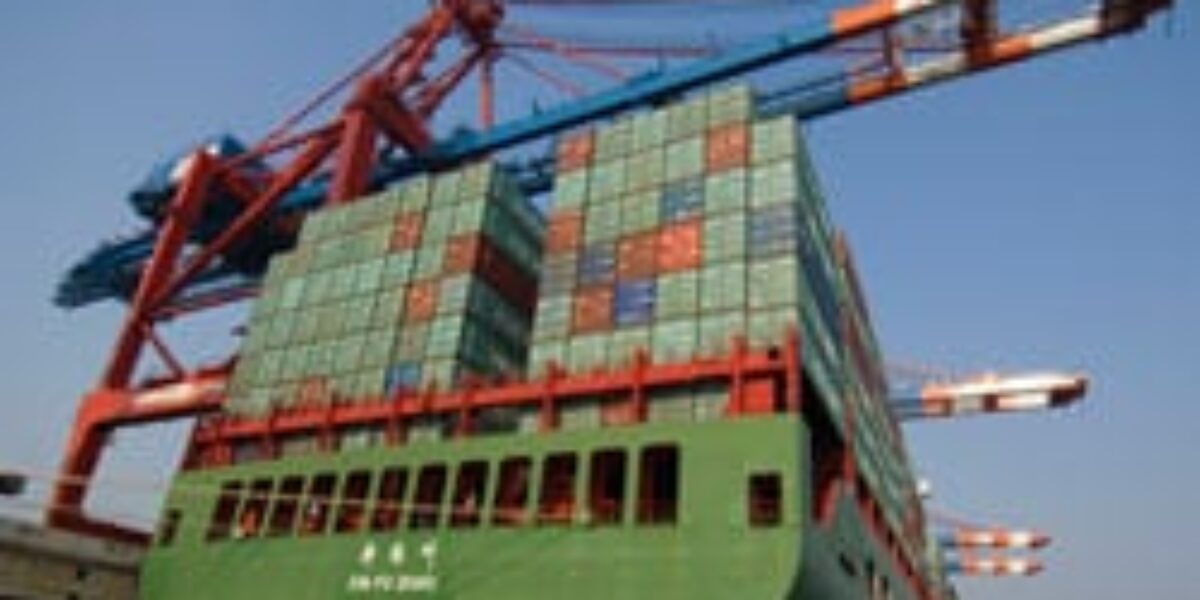Green Port of Hamburg – Combining economic growth and sustainability
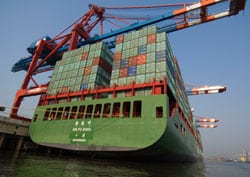
The port of Hamburg, Europe’s third-largest container port, is setting the bar for green, sustainable business solutions. The vibrant industrial and commercial hub in the north of Germany demonstrates that environment protection and economic success can go hand in hand.
With more than 11,000 arriving ships and 7.9 million TEU per year, the port of Hamburg is one of the most important trading centres in northern Europe. For any sea port of this size, sustainability has become very topical as environmental protection has turned into a major factor for business decisions.
Hamburg’s maritime trade started developing eco-friendly technologies several years ago, the objective being to harmonise economic objectives and ecological concerns.
In fact, Hamburg’s maritime trade started developing eco-friendly technologies several years ago, the objective being to harmonise economic objectives and ecological concerns. Today, the port of Hamburg can boast highly efficient global transport chains combined with green, sustainable port operations.
Hamburg’s industrial port demonstrates in many ways that a port which embarks on resource protection won’t lose its competitive edge – on the contrary, it can even become more attractive. Hamburg has managed to expand its position as a leading international maritime hub, while at the same time turning into a green port that embraces climate protection.
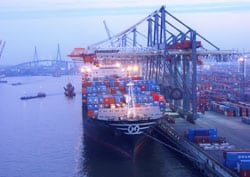
More ships, fewer emissions
One of the means of reducing CO2 emissions has been the use of sulphur-free fuel. Since 2009, the Hamburg Port Authority (HPA) has been using this for its own fleet of ships. In addition to that, the HPA mooring spaces and the public mooring spaces for barges and ferries are equipped with a land power connection.
In collaboration with ECOPorts, the HPA has also created incentives for enhancing eco-friendliness on the water: the “Environmental Ship Index” and the “Carbon Footprint” were designed to assess the environmental impact of ocean-going vessels. Today, several European ports use these parameters for calculating port fees. Since July 2011, Hamburg, too, calculates its port fees based on a ship’s ecological impact.
What is more, Hamburg’s port railway rewards the use of eco-friendly shunting locomotives, which get a discount on port railway fees if they feature a particle filter. The HPA is also strengthening the port railway as an environmentally-friendly means of transportation as more than 30 percent of hinterland traffic is covered by the port railway.
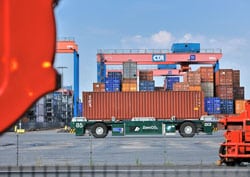
Efficient container terminals
To transform Hamburg’s port into a green port, numerous companies from the maritime and logistics trade, among them Hamburger Hafen und Logistik AG (HHLA), have joined the “Eco Partnership” programme, an initiative by the City of Hamburg and private businesses that aims at promoting sustainable management.
Here, measures primarily address the efficiency of container terminals: for instance, HHLA’s Altenwerder terminal will soon be operated using renewable energy only, while the container bridges feed power back into the grid as they set down containers. Moreover, HHLA has launched a project for developing battery-run automated guided vehicles for carrying containers onsite. Soon, these could replace the current diesel-run vehicles, which are already fuel-efficient, thus reducing emissions to zero.
The Hamburg Port Authority embarks on an environmental strategy that follows the bold objectives of Hamburg’s climate protection scheme – a concept that has been rewarded with the title “European Green Capital 2011”. According to the scheme, emissions are planned to be reduced by 40 percent until the year 2020, and by 2050 even further to 80 percent compared with 1990. Measures to achieve this goal include sustainable business and construction, eco-friendly traffic, nature conservation and sustainable consumption.
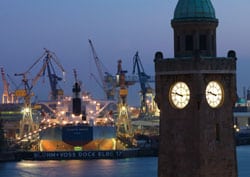
Maritime flair amid the city centre
Located at the heart of the city, the port of Hamburg keeps attracting visitors from near and far. The river Elbe, which boasts spectacular cruise liners and container ships, is considered one of the city’s major tourist attractions. The new HafenCity district, located directly beneath the waterside, showcases innovative, sustainable building construction at its best, while the Speicherstadt warehouses and the Fischmarkt square represent Hamburg’s historical harbour. During the later hours, the entertainment district around the Reeperbahn invites for a leisurely stroll.


